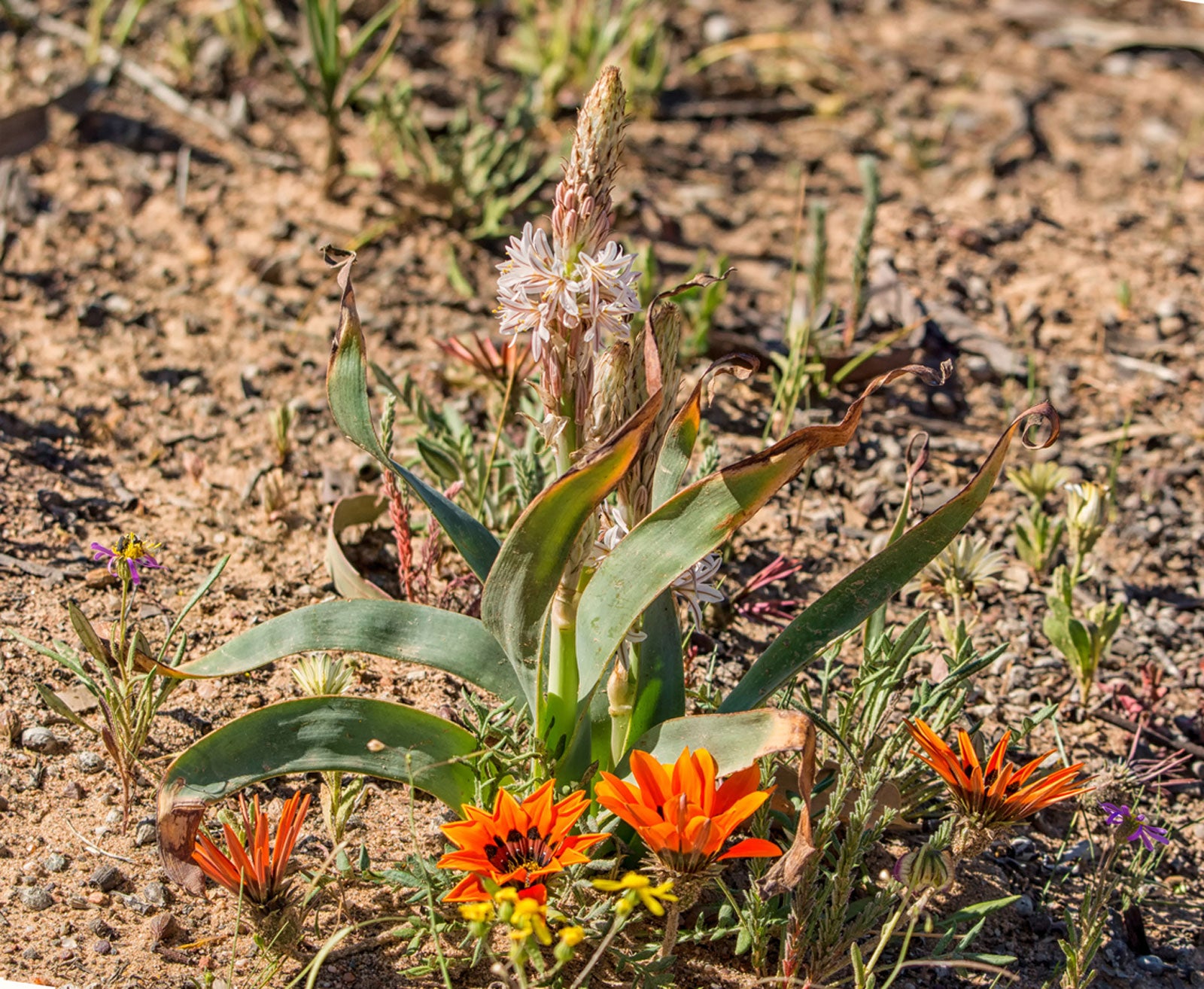
If you’re looking for a more exotic plant to cultivate, try growing Trachyandra plants. What is a Trachyandra? There are several species of this plant found throughout South Africa and Madagascar. The following article contains Trachyandra plant info about different species and tips on growing Trachyandra succulents – if you’re lucky enough to find one.
What is a Trachyandra?
Trachyandra is a genus of plants similar to Albuca. The majority of the species are from the Western Cape of Africa. They are tuberous or rhizomatous perennials. The leaves are fleshy (succulent) and sometimes haired. Many of Trachyandra plants are small and shrub like with fleeting (each bloom lasts for less than a day) white star-shaped flowers.
The tuberous perennial Trachyandra falcata is found along the west coast of South Africa. It is also called “veldkool,” meaning field cabbage, as the flower spikes are eaten as a vegetable by the indigenous people of the region.
T. falcata has broad sickle shaped, leathery leaves with erect, sturdy flower stalks protruding from the stem base. The white blooms are blushed a faint rose hue with a distinctive brown line running the length of the flower.
Other species include Trachyandra hirsutiflora and Trachyandra saltii. T. hirsuitiflora can be found along the sand flats and lower elevations of the Western Cape of South Africa. It is a rhizomatous perennial with a linear habit that grows to about 24 inches (61 cm.) tall. It blooms in late winter to spring with an excess of white to grey flowers.
T. saltii is found along the grasslands of southern Africa. It grows to a height of about 20 inches (51 cm.) and has a grass-like habit with a single stem and white flowers that bloom in the afternoon and close at dusk.
Another species of this plant is Trachyandra tortilis. T. tortilis has an amazing habit. It grows from a bulb and is found along the Northern and Western Cape of South Africa in well-drained sandy or rocky soil.
Sign up for the Gardening Know How newsletter today and receive a free copy of our e-book "How to Grow Delicious Tomatoes".
Unlike the erect leaves of other varieties of this plant, T. tortilis has ribbon-like leaves that fold and coil, varying from plant to plant. It grows up to 10 inches (25 cm.) in height with three to six leaves that get to about 4 inches (10 cm.) long. Flowers of this plant species are pale pink striped with green and are borne on a multi-branched spike.
Growing Trachyandra Succulents
These plants are actually considered quite rare in cultivation, so if you happen to come across one, it could be an expensive addition to your exotic plant collection. Since they’re native to South Africa, they’re most often grown indoors as houseplants in well-draining potting soil.
Also, these are winter growers, which means the plant will go dormant in summer, dying back for a month or so. During this time, you should only provide minimal water, maybe once or twice, and keep it in a warm, well-ventilated area.
Once temps begin to cool, the plant will begin to regrow its leaves. Care is then a matter of providing plenty of sun. Since these bulbs are prone to rot in overly moist conditions, suitable drainage is vital. While Trachyandra will require regular watering every two weeks throughout its active growth from fall throughout spring, make sure to let the plant dry out between waterings.

Amy Grant has been gardening for 30 years and writing for 15. A professional chef and caterer, Amy's area of expertise is culinary gardening.
